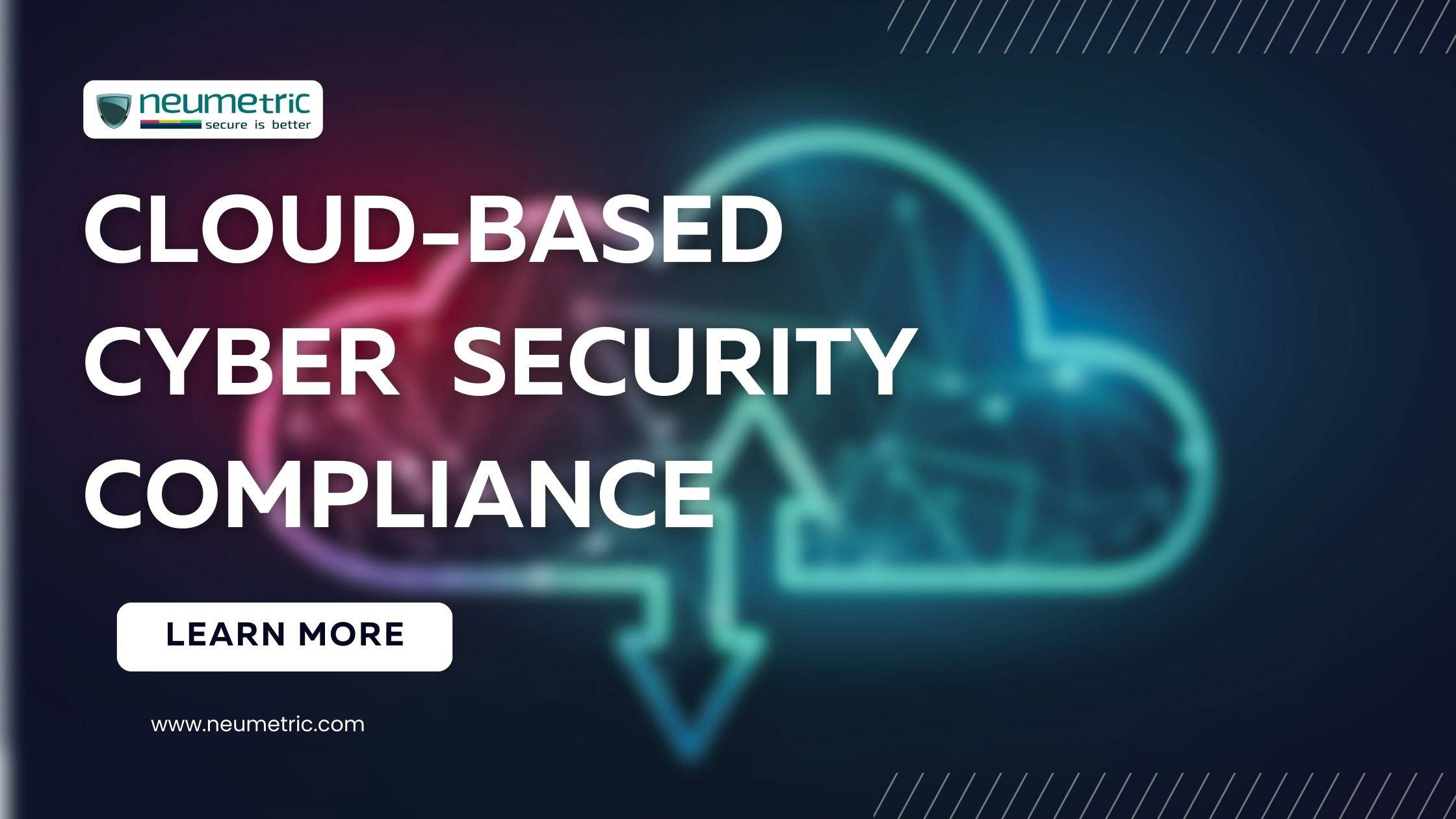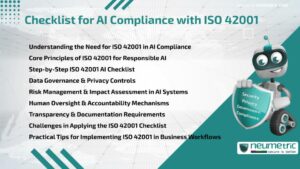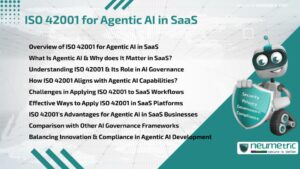Table of Contents
ToggleIntroduction
There has been a fundamental shift in the way organisations manage their data & IT infrastructure in recent years. Cloud computing adoption has soared, revolutionising the way businesses function. This section will provide a succinct but thorough summary of the growing reliance on cloud computing. It will investigate the causes for this trend, including cost efficiency, scalability & adaptability. It will also discuss the many types of cloud services, such as Infrastructure as a Service [IaaS], Platform as a Service [PaaS] & Software as a Service [SaaS], to lay the groundwork for understanding the difficulties & opportunities connected with cloud data security.
As organisations migrate to cloud-based solutions, they are confronted with an ever-changing spectrum of cybersecurity threats. This section will delve into the ever-changing nature of cyber threats, highlighting the sophistication & diversity of attacks that have evolved in the digital age. The topic will focus on the special issues offered by cloud settings, ranging from ransomware to phishing tactics. Readers will realise the importance of comprehensive cybersecurity procedures to protect sensitive data in the cloud after gaining a clear grasp of the threat landscape.
With the rise of cloud computing & the omnipresent threat of cyber attacks, ensuring compliance with cybersecurity standards has become paramount. This section will underscore the critical role that cybersecurity compliance plays in the contemporary cloud era. It will discuss the legal & regulatory frameworks that govern data protection & privacy, emphasizing the consequences of non-compliance. By adhering to cybersecurity compliance standards, organizations not only protect themselves from potential legal repercussions but also instill trust among clients & stakeholders.
Understanding Cloud-Based Cybersecurity Compliance
Understanding the significance of cybersecurity compliance for cloud-based operations requires defining it. This section will provide a thorough definition of cybersecurity compliance, emphasising its function in developing rules & standards for securing sensitive data. It will also look at the role of compliance in risk mitigation, establishing a security culture & adhering to industry best practices.
Data security in the cloud presents distinct issues that necessitate specialised solutions. This section will go into the complexities of cloud-based cybersecurity difficulties, including data residency, shared accountability models & the dynamic nature of cloud infrastructure. Organisations can modify their cybersecurity strategy to effectively address the complexities of the cloud environment by identifying & comprehending these difficulties.
Navigating the complex landscape of regulations is essential for organizations operating in the cloud. This subsection will provide an overview of major regulatory frameworks that impact cloud security, such as GDPR, HIPAA & others. By understanding these regulations, businesses can align their cybersecurity practices with legal requirements, ensuring compliance & minimizing the risk of penalties. This section sets the foundation for the subsequent exploration of best practices & case studies.
The Benefits of Cloud-Based Cybersecurity Compliance
One of the key benefits of implementing cloud-based cybersecurity compliance is improved data security & privacy. This section will look at how compliance measures help to secure sensitive information, prevent unauthorised access & ensure the confidentiality of cloud data. Organisations may develop confidence with customers & demonstrate a commitment to protecting their precious data by implementing effective security measures.
Cloud-based cybersecurity compliance extends beyond preventive measures to improve threat detection & incident response capabilities. This section will discuss how compliance measures, like as continuous monitoring & quick incident response plans, help to identify & mitigate security issues early. Improved threat detection guarantees a proactive cybersecurity approach, reducing the effect of prospective breaches.
Cloud-based cybersecurity compliance improves security while also being cost-effective & scalable. This section will go over how leveraging cloud services helps organisations to have access to cutting-edge security infrastructure without making large upfront investments. The scalability of cloud solutions means that security measures may adapt to the organization’s changing needs, resulting in a flexible & efficient approach to cybersecurity.
Regulatory Frameworks Shaping Cloud Compliance
This section will go over the GDPR’s implications for cloud-based cybersecurity compliance in detail. It will go over core GDPR principles such as data subject rights, legitimate data processing & the roles of data processors & controllers. The focus will be on how businesses may connect their cloud security policies with GDPR standards to secure personal data protection & compliance with European data protection rules.
HIPAA is a fundamental regulatory framework that governs healthcare data security & privacy. This section will go into detail about the unique factors & requirements that healthcare organisations must meet when implementing cloud-based cybersecurity compliance. Data encryption, access controls & the need of audit trails in meeting HIPAA regulations are some of the topics that may be covered.
Beyond GDPR & HIPAA, various industries have unique regulatory frameworks that impact cloud security. This subsection will provide an overview of other industry-specific regulations, such as those governing financial services or critical infrastructure. Understanding these regulations is essential for organizations operating in specific sectors to tailor their cloud security measures accordingly & maintain compliance.
Best Practices for Implementing Cloud-Based Cybersecurity Compliance
Assessing & Understanding Your Organization’s Risk Profile
A full understanding of an organization’s risk profile is required for effective cybersecurity compliance. This section will cover best practices for conducting a comprehensive risk assessment & identifying potential threats & vulnerabilities specific to the operations of the organisation. The emphasis will be on matching cybersecurity measures with the risk appetite & commercial objectives of the organisation.
Selecting the Right Cloud Security Service Providers
Choosing the correct cloud security service provider is a vital component of effective cybersecurity compliance implementation. This section will explain how to evaluate & choose cloud service providers based on security features, certifications & compliance standards. It will also look at the shared responsibility model & how organisations & cloud providers may work together to guarantee a secure & compliant cloud environment.
Implementing Encryption & Access Controls in the Cloud
Data security in the cloud is mainly reliant on encryption & access controls. This section will go over best practices for putting in place strong encryption methods to protect data at rest & in transit. It will also discuss the significance of access controls, such as role-based access & multifactor authentication, in preventing unauthorised access to sensitive data housed in the cloud.
Overcoming Challenges in Cloud Security Compliance
Understanding Data Sovereignty: Learn about data sovereignty & the problems it presents in the context of cloud security compliance. Discuss how different nations have different legislation regarding data storage & processing, emphasising the need of organisations being aware of & adhering to these regulations.
Implementing regionally Distributed Data Centres: Investigate the use of regionally distributed data centres to meet data sovereignty problems. Discuss how organisations can select data centre sites strategically in order to comply with regional data protection requirements while also optimising performance.
Data Residency options: Investigate technical options that make data residency compliance easier. This could include tools & strategies that enable businesses to control where their data is stored & processed, guaranteeing compliance with specific legal obligations.
Defining Roles & Responsibilities: Provide a comprehensive understanding of the shared responsibility model, emphasizing the distinct responsibilities of cloud service providers & their customers. Discuss the importance of clearly defining roles & responsibilities to avoid gaps in security coverage.
Customer Responsibilities in the Cloud: Explore the customer’s role in ensuring security within the shared responsibility model. This could include securing access credentials, configuring security settings & regularly monitoring & assessing the security posture of their cloud environment.
Real-Time Monitoring for Threat Detection: Emphasize the importance of continuous monitoring for real-time threat detection. Discuss tools & technologies that enable organizations to monitor their cloud environments proactively & identify potential security incidents promptly.
Regular Security Audits & Compliance Assessments: Discuss the significance of conducting regular security audits & compliance assessments. Explore the types of audits that organizations should consider, such as penetration testing & vulnerability assessments, to ensure ongoing compliance with security standards.
Future Trends in Cloud-Based Cybersecurity Compliance
Zero Trust Architecture: A Zero Trust strategy is progressively replacing the old perimeter-based security model. This entails authenticating individuals & devices regardless of their location before giving access. This method adds an extra layer of protection, which is especially important in cloud environments where data & applications are spread.
Blockchain Technology for Enhanced Security: Blockchain technology is gaining popularity because of its promise to improve the security of cloud-based systems. Blockchain can safeguard transactions, validate identities & improve data integrity by providing a decentralised & tamper-proof ledger, all of which are critical parts of cloud security compliance.
Globalization of Data Protection Laws: With data often traversing international borders in the cloud, there is an anticipation of further globalization of data protection laws. Organizations will likely face the challenge of complying with an evolving patchwork of regulations, emphasizing the need for a flexible & scalable compliance framework.
Stricter Cybersecurity Regulations: As cyber threats become more sophisticated, regulators are expected to introduce stricter cybersecurity standards. Cloud service providers & their customers will need to adapt to new compliance requirements, ensuring that security measures remain robust & effective.
Focus on Supply Chain Security: The increasing interconnectedness of organizations through supply chains is likely to draw regulatory attention. Future regulations may emphasize the importance of securing the entire supply chain, including third-party vendors & partners, to mitigate potential cybersecurity risks.
Advanced Threat Detection & Response: AI & machine learning algorithms can analyse massive volumes of data to detect patterns that indicate potential cyber threats. These technologies, when used in the context of cloud security, can enable real-time threat detection & response, enhancing organisations’ ability to combat emerging cyber threats.
Anomaly Detection Using Behavioural Analytics: Machine learning algorithms can learn the usual behaviour of individuals & systems, allowing the detection of aberrant actions. This is especially useful in cloud environments, where detecting anomalous patterns might alert to potential security concerns.
Conclusion
The fundamental notion of cloud-based cybersecurity compliance emphasises the interdependence of technology & law. Organisations must navigate a dynamic environment, from the increased reliance on cloud computing to the subtle problems of securing data in the cloud. GDPR & HIPAA, for example, extend a regulatory umbrella over cloud operations, mandating a diligent approach to compliance.
The rapid speed of technological advancement & the sophistication of cyber threats highlight the vital need for organisations to take a proactive approach to cloud security. Compliance is a constant commitment to modifying security measures to the growing threat landscape, not a static checkbox. The importance of regular risk assessments, effective incident response plans & a commitment to ongoing education cannot be overstated.
While technologies & regulations provide a structural framework for cybersecurity, the human element remains central. The conclusion draws attention to the vital importance of cultivating a culture of cybersecurity compliance within organizations. Employees, from leadership to frontline staff, play a crucial role in fortifying the organization’s defenses. Regular training, awareness campaigns & a collective commitment to security best practices contribute to a resilient cybersecurity culture.
FAQ’s
- What is cloud-based cybersecurity compliance?
Cloud-based cybersecurity compliance refers to the set of practices & measures designed to ensure the security of data & systems in cloud environments while adhering to relevant regulations & standards.
- Why is cybersecurity compliance important in the cloud era?
Cybersecurity compliance in the cloud era is crucial to protect sensitive data from evolving threats, maintain regulatory adherence & instill trust among stakeholders.
- What are the benefits of cloud-based cybersecurity compliance?
Benefits include enhanced data protection, improved threat detection, incident response capabilities & the availability of cost-effective, scalable security solutions in the cloud.





